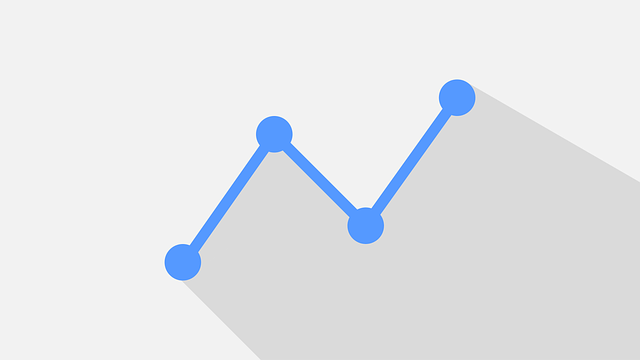Commodity tips
Commodity tips
Commodity tips
- Commodity tips
- Commodity tips
Description
Commodity Trading Tips: A Comprehensive Guide for Successful Trading-
Introduction to Commodity Trading
Commodity trading involves the buying and selling of raw materials or primary agricultural products like gold, oil, silver, natural gas, wheat, and coffee. These commodities are traded on commodity exchanges globally and can provide significant returns for traders. Understanding commodity markets, trends, and economic factors is essential to succeed in this space.
Whether you’re a novice or an experienced trader, commodity tips can guide you through the complexities of the market and help you maximize profits.
Why Trade Commodities?
Diversification
Commodities provide an opportunity for portfolio diversification. By adding commodities to your investment mix, you can hedge against risks in traditional markets like stocks and bonds.Hedge Against Inflation
Commodities, especially precious metals like gold, tend to perform well during periods of inflation, offering a natural hedge for investors.Liquidity and Market Access
The commodity market is highly liquid, meaning that traders can buy or sell their positions quickly. This liquidity, combined with access to global markets, makes commodity trading an attractive option.Profit Potential from Market Movements
Commodities can experience significant price fluctuations due to geopolitical factors, weather conditions, and market sentiment. Traders can profit from both upward and downward movements in commodity prices.
Top Commodity Trading Tips for Success
Understand the Fundamentals of Commodity Markets
Before diving into trading, it’s essential to understand the fundamental factors that influence commodity prices, such as:- Supply and Demand: Prices rise when demand exceeds supply and vice versa.
- Global Events: Political instability, natural disasters, or economic crises can drastically impact commodity prices.
- Weather Conditions: Agricultural commodities like wheat, coffee, and sugar are highly sensitive to weather patterns.
- Currency Movements: Commodities are often priced in U.S. dollars, and fluctuations in the dollar can affect commodity prices.
Choose the Right Commodities for Trading
Not all commodities are the same. As a trader, it’s essential to select commodities that align with your trading style and risk tolerance. Some popular commodities to trade include:- Precious Metals: Gold, silver, and platinum.
- Energy: Crude oil, natural gas, and gasoline.
- Agricultural: Wheat, corn, coffee, and cotton.
- Industrial Metals: Copper, aluminum, and nickel.
Stay Informed with Economic News
Commodity prices are highly sensitive to global events and economic reports. Keep an eye on:- Government Reports: Data on inflation, interest rates, and employment can have a direct impact on commodity prices.
- Geopolitical Events: Tensions between major oil-producing nations or trade wars can affect prices.
- Commodity-Specific Reports: Weather reports, crop forecasts, and energy inventories can significantly influence agricultural and energy commodities.
Master Technical Analysis for Commodity Trading
Technical analysis is a powerful tool that helps you understand price movements based on historical data. Key techniques to master include:- Trendlines and Chart Patterns: Identifying bullish or bearish trends and chart patterns like head-and-shoulders or double tops/bottoms.
- Moving Averages: Simple moving averages (SMA) and exponential moving averages (EMA) can help smooth out price data to identify trends.
- Relative Strength Index (RSI): RSI helps identify whether a commodity is overbought or oversold, indicating potential price reversals.
Implement Risk Management Strategies
Proper risk management is crucial for long-term success in commodity trading. Some key strategies include:- Stop-Loss Orders: Always use stop-loss orders to limit potential losses on your trades.
- Position Sizing: Avoid putting all your capital into one trade. Diversify across different commodities to spread your risk.
- Risk-to-Reward Ratio: Ensure your potential reward justifies the risk you’re taking. A common ratio is 2:1, meaning you aim to make twice as much as you’re willing to lose.
Monitor Volatility
Commodities are often more volatile than other asset classes. This volatility can create both opportunities and risks. Use strategies like straddle or strangle options to profit from market swings.Leverage Seasonal Trends
Certain commodities, such as agricultural products, follow seasonal price patterns. For example, coffee prices tend to rise during dry periods in Brazil, while natural gas prices can spike during winter months. Understanding and anticipating these patterns can give you an edge in commodity trading.
Popular Commodity Trading Strategies
Swing Trading
Swing traders capitalize on short to medium-term price movements. Using technical indicators and chart patterns, traders look to buy low and sell high within a defined time frame. This strategy can work well in volatile markets.Scalping
Scalping is a high-frequency trading strategy that aims to make small profits on short-term price movements. Scalpers typically hold positions for seconds or minutes and may make dozens of trades a day.Trend Following
The trend-following strategy involves identifying a strong market trend and riding it for as long as possible. This strategy works well in commodities with clear long-term directional movements, such as gold or oil.Breakout Strategy
A breakout strategy focuses on commodities that are trading within a specific range and then breaking out of that range. Traders often use price channels or support and resistance levels to predict where the breakout might occur.
Key Indicators for Successful Commodity Trading
- Moving Averages: Simple and exponential moving averages are used to identify trends and entry/exit points.
- Commodity Channel Index (CCI): CCI measures how far the price has deviated from its average price over a period, helping traders identify overbought or oversold conditions.
- Bollinger Bands: Bollinger Bands help measure volatility by creating upper and lower bands around a moving average. They can indicate overbought or oversold conditions.
- Volume: Trading volume helps confirm the strength of a price movement. A price increase coupled with high volume often indicates a strong trend.
Conclusion: Mastering Commodity Trading for Maximum Profit
Commodity trading offers significant opportunities for profit, but it requires a deep understanding of the markets, technical analysis, and risk management. By staying informed, choosing the right strategies, and employing proper risk management, you can increase your chances of success in commodity trading.
Remember to diversify your portfolio, continuously educate yourself, and test strategies in demo accounts before committing real capital.
SEO Keywords for Content Optimization:
Commodity trading tips, commodity market tips, successful commodity trading strategies, trading tips for commodities, how to trade commodities, commodity trading for beginners, best commodity trading strategies, profitable commodity trading, tips for trading gold and silver, crude oil trading tips, agriculture commodity tips, commodity price trends.
- All
- Options
- Futures
- Equity
- Commodity





